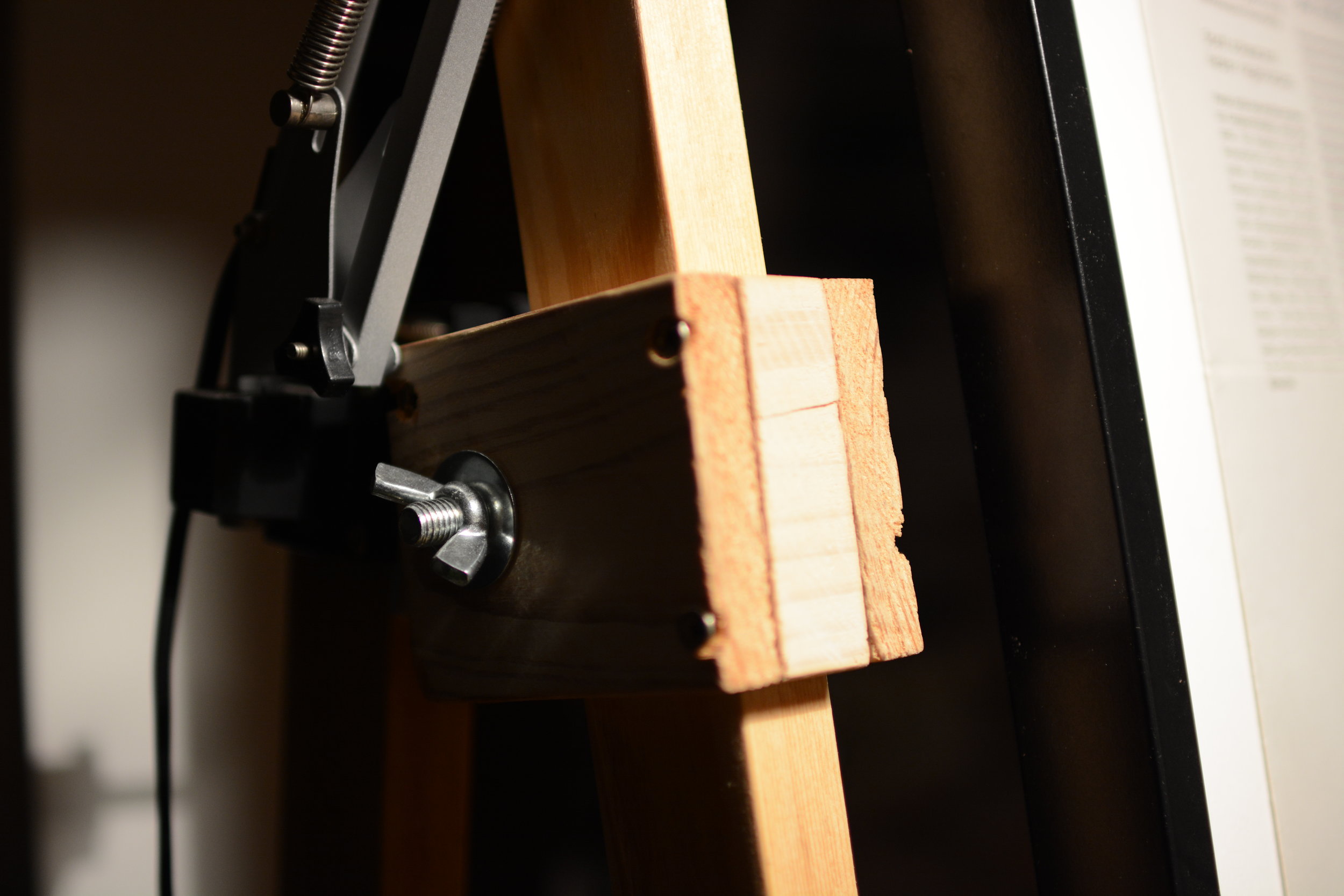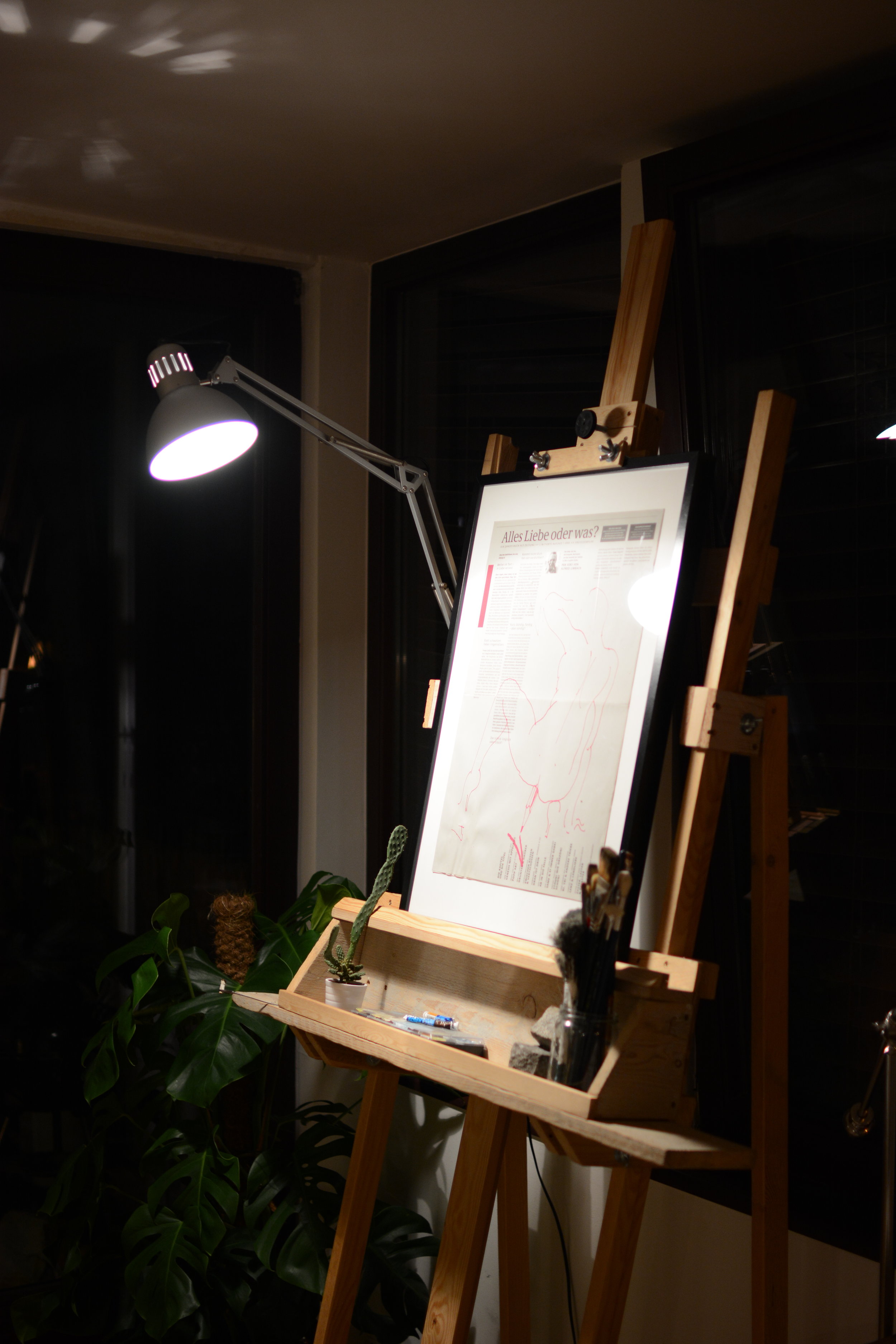The Monster Easel
One day in May, I decided that I should resume painting. I visited some art shops in Berlin, and promptly realized both how relatively simple they are, and how expensive a decent easel can be. Furthermore, it seemed to me that all of the models I found were either too flimsy or lacked panache. Thus, I took reference photos and began to plan and construct my own extra large, customized, rolling, adjustable, stable art easel.
The blueprint changed a few times and I didn't have all of the tools available to simply replicate what I'd seen (which means that I made some of it up and engineered simple wooden pieces to function in place of manufactured ones). The structure is relatively simple, relying mostly on screws as hinged joints and butterfly nuts to secure fasteners. The wheels were the most expensive parts, at €5 each, but they include a foot-lock mechanism vital to anchoring the workstation during a large project.
Using some wood leftover from the pipe + board wardrobe I built earlier this year, I started with the base, drilling holes for the wheels and securing them, sanding, then bracing the base and working out the ideal lengths for the upper frame. After cutting, sanding and joining those, I began developing the paint shelf. I customized this important hub with enough space to hold plenty of supplies, tall jars, brushes, paints and solvents. I also made the shelf extra long, in order to drill large holes on the left and right extremes outside of the normal workspace. These holes were later filled with large, lipped mason jars, flanking the painter: the left, a beverage holder; the right, solvents. Lastly, I installed an alligator clip. Thus, the left side of the paint shelf is inspiration and relaxation, the right is functionality and business.
I made the lip of the canvas holder semi-adjustable, should a large or particularly small canvas ever reside upon it. The entire shelf was then mounted to a dual, forked vice system, secured by butterfly nuts to the front frame braces, allowing it to adjust up or down along the height of the easel. This function is pivotal to the entire structure, as it is sometimes important for an artist to adjust the height of a canvas in order to work on various sections of a piece. This avoids strain, as well as an unsafe, awkward or an unbalanced setup. It's especially important when you're 6'2'' and really hate having to hunch over to work.
An electronic lamp became the finishing touch, mounted on the left frame brace, extended outward and angled toward the right to provide uninterrupted, direct light to areas of interest when necessary.















